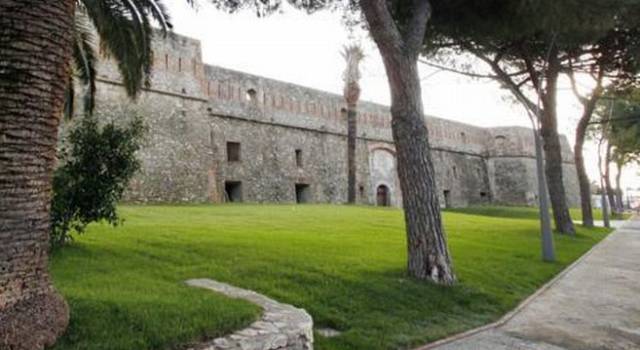Santa Tecla fortress, was built in 1755 by the Genoa Republic, following the project of the military engineer Giacomo De Sicre, as a power show-off after the popular uprising of the town in 1753 and the consequent imprisonment of the governor sent by Genoa.
All this was originated by the ancient opposition of the Republic of Genoa to the plan of annexation of the town to the Reign of Sardinia. The people, being against the demolition of many houses planned for the building of the fortress, rebelled and weren’t present at the laying of the first stone in 1754.
Its early name Saint George Fortress was later changed after the name of Saint Tecla, Saint Paul’s disciple who miraculously saved from martyrdom twice and whose relic was put at the laying of the first stone.
Saint Tecla fortress performed its role as a defender coastal system even during the Napoleonic period; and from 1815 it was used as a barrack.
In 1864 the fortress was used as Judicial Prison and it maintained this function until 1997, except from 1943 to 1945 when it was used as an ammunition depot for the German Army.
In 1997 its use as a depot was dismissed, later the building was restored and became a public space for cultural activities.
In 2013 the fortress was assigned to the Ligurian Supervision of Environmental and Architectural Assets that started the restoration and consolidation in order to use the ground floor of the building for cultural exhibitions and events.
PLAN OF THE BUILDING
The fortress has a triangular area with ramparts at each summit and is one of the last intact typical examples of ‘700 military architecture on the Ligurian coastline.
It has three floors: the Commander’s quarters, the chapel in the middle of the courtyard and a water well at the ground floor; the rooms for about 80 soldiers were at the first floor; at the second floor the rooms for two Captains, the depots and the artillery batteries (two aiming towards land and one towards the sea). The military potential of the fortress was of 16 artillery pieces, put on front bulwarks and other 5 smaller ones on the rear bastion.
The fortress was used to control the town and not to protect it.

